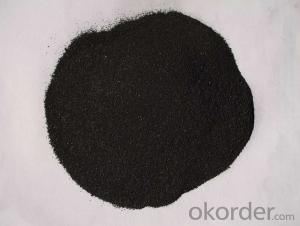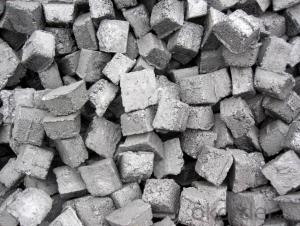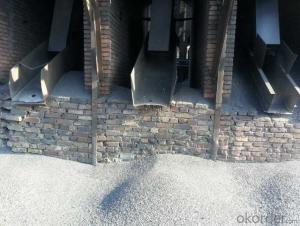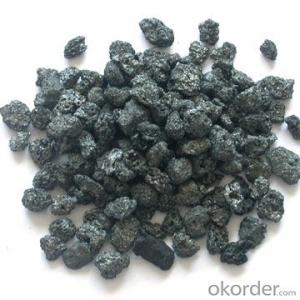Calcined Anthracite Coal Carbon Coke for Steelmaking
- Loading Port:
- Tianjin
- Payment Terms:
- TT or LC
- Min Order Qty:
- 20 m.t.
- Supply Capability:
- 10000 m.t./month
OKorder Service Pledge
OKorder Financial Service
You Might Also Like
Quick Details
Place of Origin: Ningxia, China (Mainland)
Application: steel making
Shape: granule
Dimensions: FC90-95%
Product Type: Carbon Additive
C Content (%): 90-95% MIN
Working Temperature: -
S Content (%): 0.5%MAX
N Content (%): -
H Content (%): 0.6%MAX
Ash Content (%): 8.5%MAX
Volatile: 2%MAX
ADVANTAGE: low ash & sulfur
COLOR: Black
RAW MATERIAL: TaiXi anthracite
Packaging & Delivery
Packaging Details: | In 1MT plastic woven bag. |
Delivery Detail: | 30-40 DAYS |
Calcined Anthracite Coal Carbon Coke for Steelmaking
Carbon Additve low Ash,S,P
FC>95% ASH<4% S<0.3%
It is made from TaiXi anthracite.
instead of pertrol coke reduce the cost
Features of Calcined Anthracite Coal Carbon Coke for Steelmaking
Shape: granule
Dimensions: FC90-95%
Product Type: Carbon Additive
C Content (%): 90-95% MIN
Working Temperature: -
S Content (%): 0.5%MAX
N Content (%): -
H Content (%): 0.6%MAX
Ash Content (%): 8.5%MAX
Volatile: 2%MAX
ADVANTAGE: low ash & sulfur
COLOR: Black
RAW MATERIAL: TaiXi anthracite
Specifications of Calcined Anthracite Coal Carbon Coke for Steelmaking
Specifications (%): | ||||||
Grade | F.C | Ash | V.M | Moisture | S | Size |
CR-95 | ≥95 | <4 | <1 | <1 | <0.3 | 0-30mm |
CR-94 | ≥94 | <4 | <1 | <1 | <0.3 | |
CR-93 | ≥93 | <6 | <1 | <1 | <0.4 | |
CR-92 | ≥92 | <7 | <1 | <1 | <0.4 | |
CR-91 | ≥91 | <8 | <1 | <1 | <0.4 | |
CR-90 | ≥90 | <8.5 | <1.5 | <2 | <0.4 | |
FAQ of Calcined Anthracite Coal Carbon Coke for Steelmaking
Why we adopt carbon additive?
Carbon Additives used as additive in steel making process. It made from well-selected Tai Xi anthracite which is low in content of ash, sulphur, phosphorus, high heat productivity, high chemically activation.
Mainly industry property of it is:instead of traditional pertroleum coal of Carbon Additives, reduce the cost of steelmaking.
Advantage of Calcined Anthracite Coal Carbon Coke for Steelmaking
1.High quality and competitive price.
2.Timely delivery.
3.If any item you like. Please contact us.
Images of Calcined Anthracite Coal Carbon Coke for Steelmaking
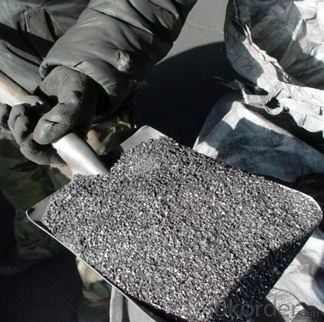
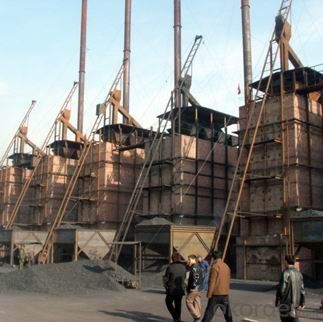
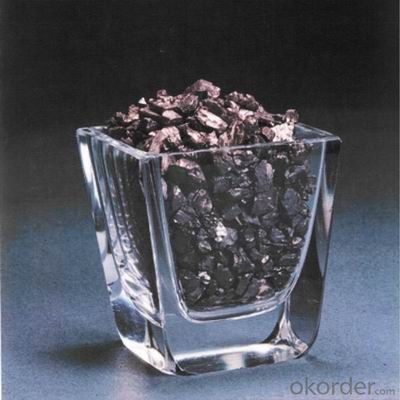
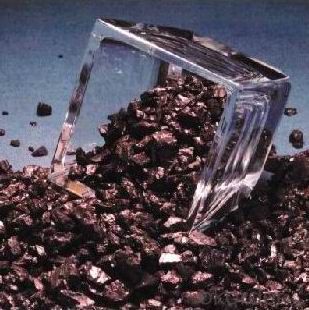
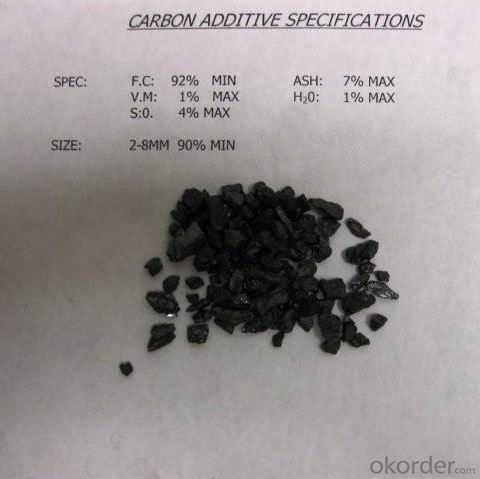
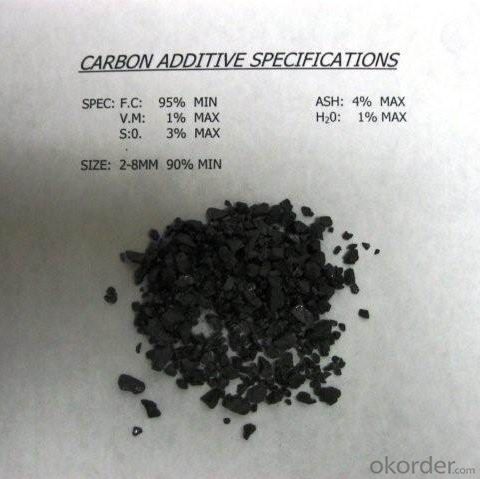
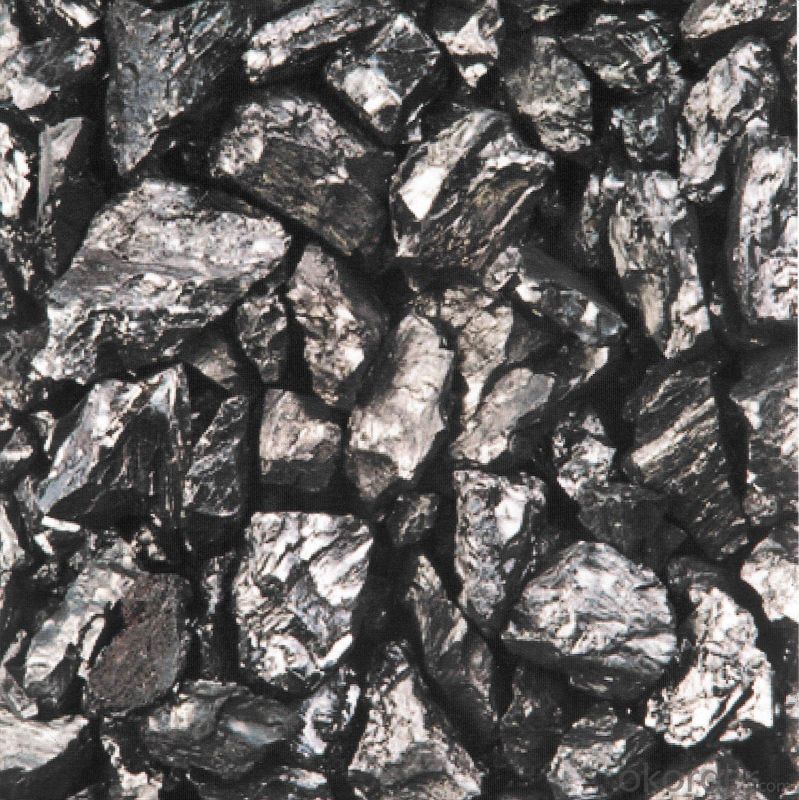

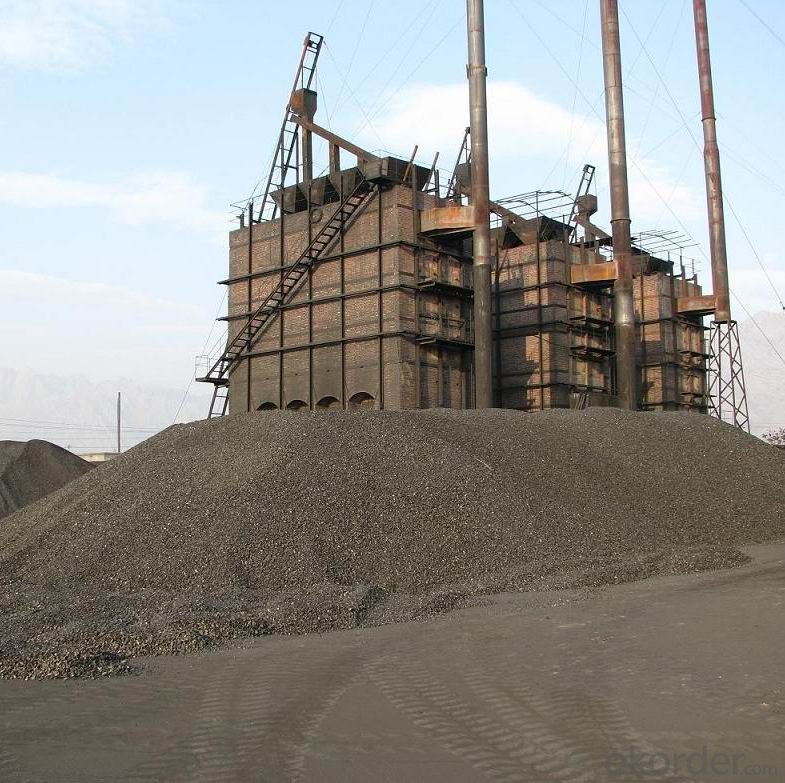

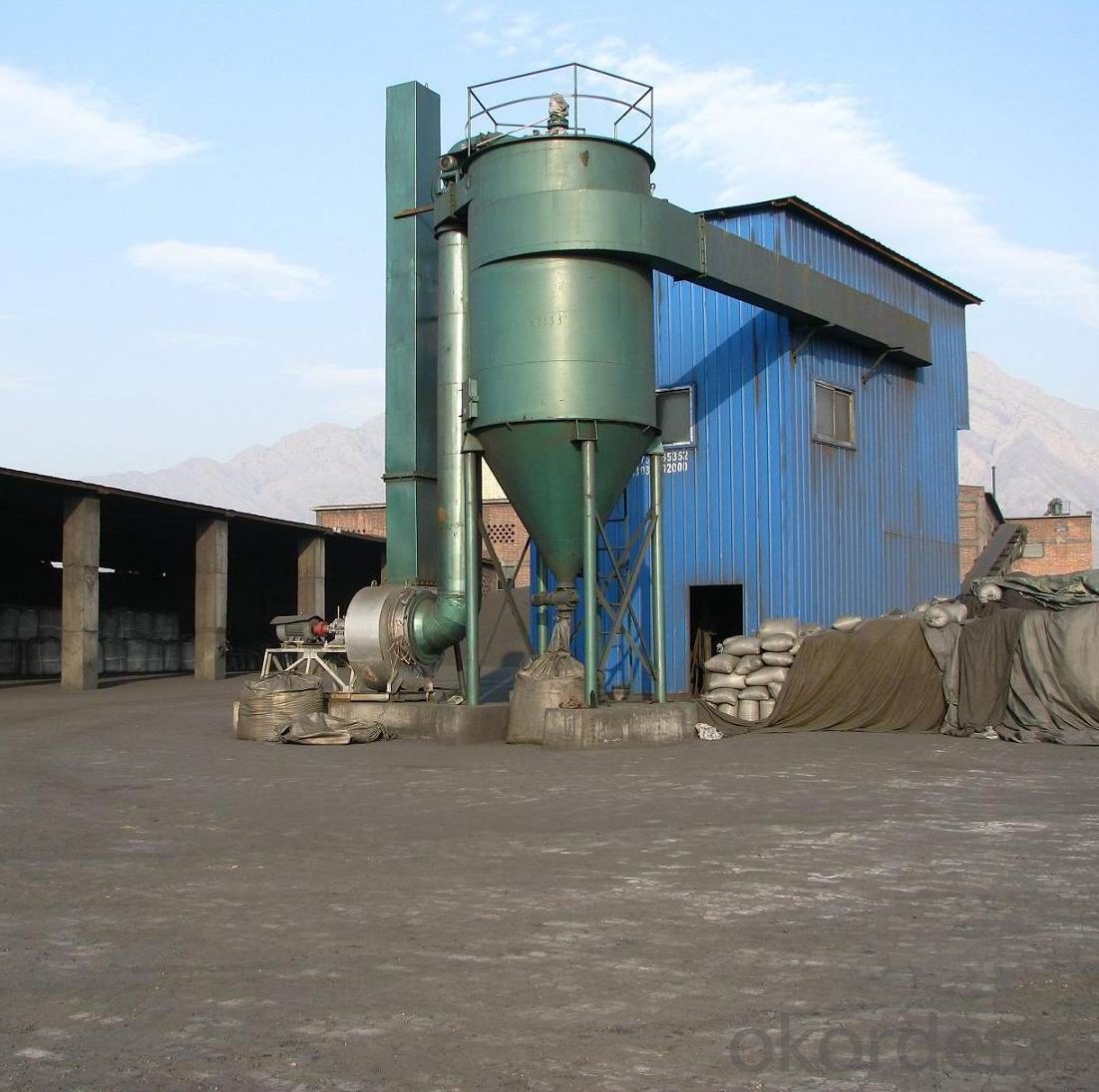
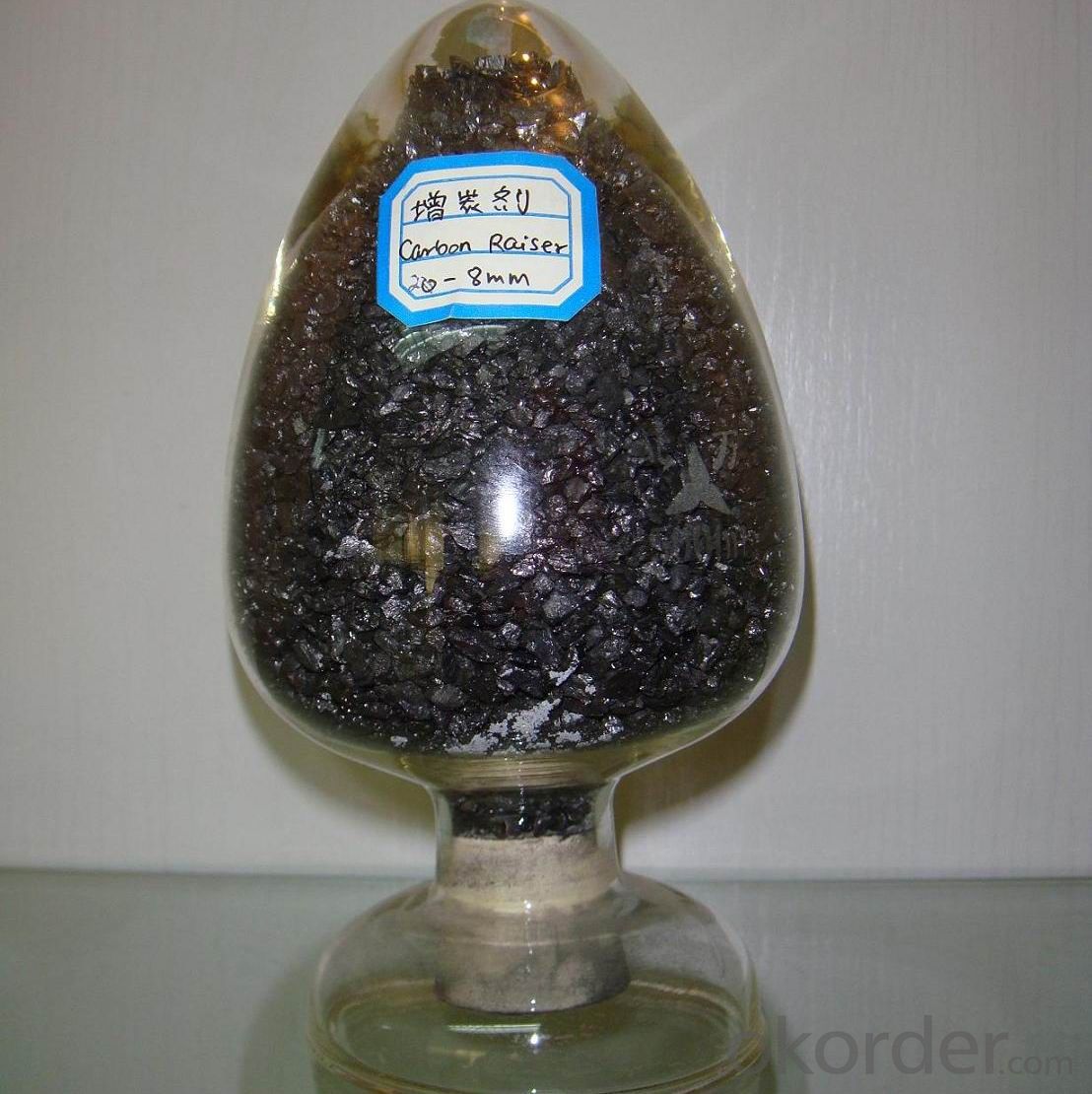
- Q:How is carbon used in the production of solar cells?
- Carbon is not typically used in the production of solar cells as a primary material. However, carbon-based materials such as carbon nanotubes or graphene may be used as conductive additives or in electrode materials to enhance the efficiency and performance of solar cells.
- Q:What should we do to reduce carbon emissions in our lives?
- The use of public transport, of course, is best to walk long distances, as far as possible the use of roads or railways, aircraft carbon emissions, the largest use of disinfection chopsticks, do not use disposable tableware, handkerchiefs do not use napkins
- Q:How does carbon impact the stability of ecosystems?
- Carbon impacts the stability of ecosystems in several ways. Firstly, carbon is a fundamental element that forms the basis of all organic compounds, including carbohydrates, proteins, and lipids, which are essential for the growth and survival of all living organisms. Carbon is cycled through various processes like photosynthesis and respiration, maintaining the energy flow within ecosystems. However, excessive carbon emissions, mainly through the burning of fossil fuels, contribute to the greenhouse effect and climate change. Rising carbon dioxide levels in the atmosphere lead to global warming, altering temperature and precipitation patterns. These changes can disrupt ecosystems, affecting the distribution and abundance of species, as well as their interactions. Additionally, carbon is a vital component of soil organic matter, which enhances soil fertility, water-holding capacity, and nutrient availability. Deforestation and land degradation, often driven by human activities, release large amounts of carbon into the atmosphere and reduce the carbon storage capacity of ecosystems. This can lead to decreased soil productivity, loss of biodiversity, and increased vulnerability to erosion and drought. Therefore, managing carbon emissions, promoting sustainable land use practices, and preserving natural habitats are crucial for maintaining the stability and resilience of ecosystems.
- Q:Can carbon in barbecue cause cancer? Can carbonated food cause cancer?
- Eat barbecue are carcinogenic, because the meat directly on the heat under the grill, the decomposition of fat droplets in the charcoal, and then with the meat proteins, it will produce a carcinogen called benzopyrene. Experts explained that if people regularly eat food contaminated by benzopyrene, carcinogens can accumulate in the body and cause stomach cancer and bowel cancer.
- Q:What are the consequences of increased carbon emissions on human health?
- Human health is significantly affected by the increase in carbon emissions. One immediate consequence is the decline in air quality. Harmful air pollutants, like particulate matter, nitrogen oxides, and ground-level ozone, are formed due to carbon emissions. These pollutants can lead to respiratory problems, such as asthma, bronchitis, and other chronic obstructive pulmonary diseases. They can also worsen existing respiratory conditions, resulting in more hospitalizations and premature deaths. Moreover, carbon emissions contribute to climate change, which has extensive effects on human health. Rising temperatures can worsen the frequency and intensity of heatwaves, causing heat-related illnesses and deaths. Vulnerable populations, such as the elderly, children, and those with pre-existing health conditions, are particularly affected by heat stress. Climate change also influences the spread of infectious diseases. Changes in temperature and rainfall patterns can alter the behavior and distribution of disease-carrying vectors like mosquitoes and ticks. This can increase the transmission of vector-borne diseases, including malaria, dengue fever, and Lyme disease. Additionally, climate change can disrupt food and water supplies, leading to malnutrition and an elevated risk of waterborne diseases. Another consequence of carbon emissions is the increased occurrence of natural disasters, like hurricanes, floods, and wildfires. These events can cause physical injuries, displacement, and mental health issues, such as post-traumatic stress disorder. The destruction of healthcare infrastructure during disasters further hampers access to necessary medical care, aggravating health problems. It is important to note that vulnerable populations, such as low-income communities, indigenous communities, and developing countries, are disproportionately affected by the health impacts of increased carbon emissions. These groups often face limited access to healthcare, making them more susceptible to the consequences. In conclusion, the effects of increased carbon emissions on human health are severe. From the deterioration of air quality to the spread of infectious diseases and the occurrence of natural disasters, the impacts are extensive and pose significant risks to individuals and communities. It is crucial to mitigate carbon emissions and invest in sustainable practices to protect human health and establish a healthier and more sustainable future.
- Q:What are the properties of carbon-based lubricants?
- Carbon-based lubricants, also known as hydrocarbon-based lubricants, have several unique properties that make them highly effective in various applications. Firstly, carbon-based lubricants have excellent thermal stability, allowing them to maintain their lubricating properties even at high temperatures. This property is particularly important in applications such as aerospace and automotive industries where components operate under extreme conditions. Secondly, carbon-based lubricants possess exceptional lubricity, reducing friction and wear between moving parts. This characteristic is crucial in machinery and equipment where minimizing friction is vital to ensure smooth operation and prevent damage. Carbon-based lubricants also have high load-carrying capacities, enabling them to withstand heavy loads and prevent metal-to-metal contact, which can lead to premature wear and failure. Moreover, carbon-based lubricants exhibit good oxidation resistance, preventing the formation of harmful sludge and deposits that can interfere with machinery performance. This property extends the lubricant's lifespan, ensuring long-term effectiveness and reducing the frequency of lubricant replacements. Additionally, carbon-based lubricants have low volatility, meaning they have a low tendency to evaporate. This property is advantageous in applications where lubricant loss needs to be minimized, such as in sealed systems or high-temperature environments. Furthermore, carbon-based lubricants are generally compatible with a wide range of materials, including metals, plastics, and elastomers. This compatibility ensures that the lubricant does not cause damage or degradation to the surfaces it comes into contact with, allowing for versatile use across different industries and applications. Overall, the properties of carbon-based lubricants, including thermal stability, lubricity, load-carrying capacity, oxidation resistance, low volatility, and material compatibility, make them highly desirable for various lubrication requirements, ranging from automotive and industrial machinery to aerospace and marine applications.
- Q:Today in the market to buy Yuba, instructions have such a word that I don't understand, please master Zhijiao: carbon fiber after energized carbon molecule formation of Brown movement, this movement can be effective in most of the electrical energy into the far infrared.
- When it is energized, its motion intensifies, the frequency becomes V2, and the frequency becomes larger, the vibration system is unstable and the frequency is back to its original frequency. So you have to release energy in the form of electromagnetic waves. I am not too clear about the specific release process. I know that the molecules do slow motion and generate additional electromagnetic waves. The frequency of the extra electromagnetic wave emitted is v2-v1, and its frequency falls in the far infrared region.
- Q:What is the relationship between carbon emissions and deforestation?
- The relationship between carbon emissions and deforestation is closely intertwined. Deforestation refers to the permanent removal of trees and vegetation in forests, usually to make way for agricultural land, urban development, or logging. This process releases large amounts of carbon dioxide (CO2) into the atmosphere, contributing to greenhouse gas emissions and climate change. Trees play a crucial role in mitigating climate change as they absorb CO2 from the atmosphere through photosynthesis and store it in their tissues. When forests are cleared, this carbon storage capacity is lost, and the carbon previously stored in trees is released back into the atmosphere. Deforestation is estimated to be responsible for around 10% of global greenhouse gas emissions. Furthermore, the burning of forests, a common practice during deforestation, also contributes to carbon emissions. When trees are burned, the stored carbon is released as CO2, exacerbating the greenhouse effect. This is particularly significant in tropical regions where deforestation is prevalent, such as the Amazon rainforest. Conversely, reducing deforestation and promoting reforestation can help mitigate carbon emissions. By preserving existing forests and planting new trees, we can enhance carbon sequestration and reduce the amount of CO2 in the atmosphere. Forest conservation and restoration efforts are crucial components of global climate change strategies, as they not only help combat climate change but also preserve biodiversity and provide vital ecosystem services. In conclusion, the relationship between carbon emissions and deforestation is clear: deforestation leads to increased carbon emissions, while forest conservation and reforestation efforts help reduce carbon dioxide levels in the atmosphere. It is essential to prioritize sustainable land-use practices and support initiatives that protect and restore forests to mitigate climate change effectively.
- Q:There are several allotropes of carbon
- Allotrope of carbon: diamond, graphite, carbon 60 (fullerene), amorphous carbon (charcoal, coke, activated carbon, etc.)
- Q:Iron and steel are different in terms of carbon content
- . An iron carbon alloy with a carbon content of less than 2% is a steel, and a carbon content of more than 2% is called iron. Steel is widely used because of its toughness, elasticity and rigidity. Life is exposed to steel, but people call different. For stainless steel, whether or not the magnet is sucked on or not, as long as the quality standards are met, it is stainless steel. Therefore, from the perspective of metallurgy said, no rust said. The main element of stainless steel corrosion resistance is chromium. If the content of chromium is above 10.5%, the steel will not rust. When smelting, the alloy elements added are different, so there is a difference between the magnet and the suction.
1. Manufacturer Overview |
|
|---|---|
| Location | |
| Year Established | |
| Annual Output Value | |
| Main Markets | |
| Company Certifications | |
2. Manufacturer Certificates |
|
|---|---|
| a) Certification Name | |
| Range | |
| Reference | |
| Validity Period | |
3. Manufacturer Capability |
|
|---|---|
| a)Trade Capacity | |
| Nearest Port | |
| Export Percentage | |
| No.of Employees in Trade Department | |
| Language Spoken: | |
| b)Factory Information | |
| Factory Size: | |
| No. of Production Lines | |
| Contract Manufacturing | |
| Product Price Range | |
Send your message to us
Calcined Anthracite Coal Carbon Coke for Steelmaking
- Loading Port:
- Tianjin
- Payment Terms:
- TT or LC
- Min Order Qty:
- 20 m.t.
- Supply Capability:
- 10000 m.t./month
OKorder Service Pledge
OKorder Financial Service
Similar products
New products
Hot products
Hot Searches
Related keywords
